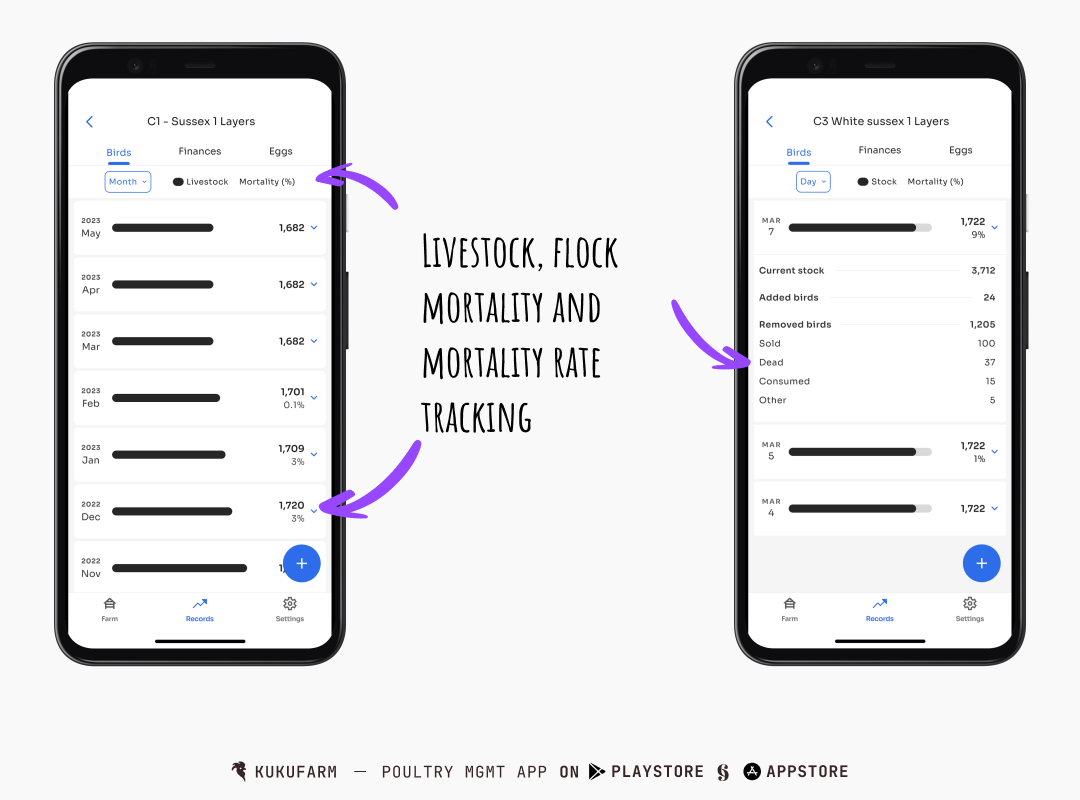A flock mortality rate enables you to determine at least 3 performance aspects of your flocks. Firstly, how many birds are left in the flock. Secondly. flocks liveability rate and finally, compare flock performance to the flock supplier’s benchmarks.
Additionally, tracking your flock’s mortality enables you to determine if your farming practices are conducive to the flock or not. As a result having such poultry records make you a data based farmer since you can make informed farming decisions.
What is flock mortality rate?
A flock’s mortality rate is the percentage of birds that have died in a that flock. An 8% mortality rate means that 8% of birds in that flock have died.

A flock’s mortality rate also determines a flock’s survivability or liveability rate. Liveability rate is the percentage of birds expected to live to full age. A flock with a 8% mortality rate has a liveability rate of 92%.
Flock suppliers usually provide poultry farmers with respective flock’s mortality and liveability rates benchmarks.
How to track flock mortality rate
Keep poultry records can be done on paper, Excel and using dedicated poultry apps. However, we recommend using dedicated poultry apps for at least 2 reasons. One, there are lots of apps with FREE plans and two, you don’t have to worry about formulas since they are already baked in.
In particular we want to showcase how to use Kukufarm poultry app to track flock mortality rate and liveability. Furthermore, with Kukufarm, you can track these indicators by day, week, month and all time. You can get Kukufarm from Google Play and App Store.
Benefits of tracking flock mortality rate
There are several benefits for tracking your flocks’ mortality and liveability rates.
1. Track livestock, a basis for egg production rate
Firstly, by tracking a poultry flock’s mortality rate, you track the number of birds left in your flock at any time, during that flock’s life time.
For a layers flock, knowing the number of birds left in a flock provides a basis for tracking that flock’s egg production rate.
2. Determine a flock liveability
Secondly, knowing a flock’s mortality rate, enables you to determine that flock’s liveability rate.
A flocks liveability rate can be compared to the flock supplier’s benchmarks, and enable a you to determine if the flock meets its expectation. Furthermore, you can determine if your farming practices are conducive to the flock, or not.
3. Determine suitability of farming practice
Last but not least, a flock’s mortality rate can help you determine if your farming practices are conducive to their flock.
A high mortality rate will usually indicate that your farming practices are not conducive. These may imply a number of mal-practices. For instance, misapplication of feeding and vaccination schedule. Secondly, inappropriate coop condition and climate. Third, lack of proper biosecurity measures, and so on.
*
You may also be interested in:

